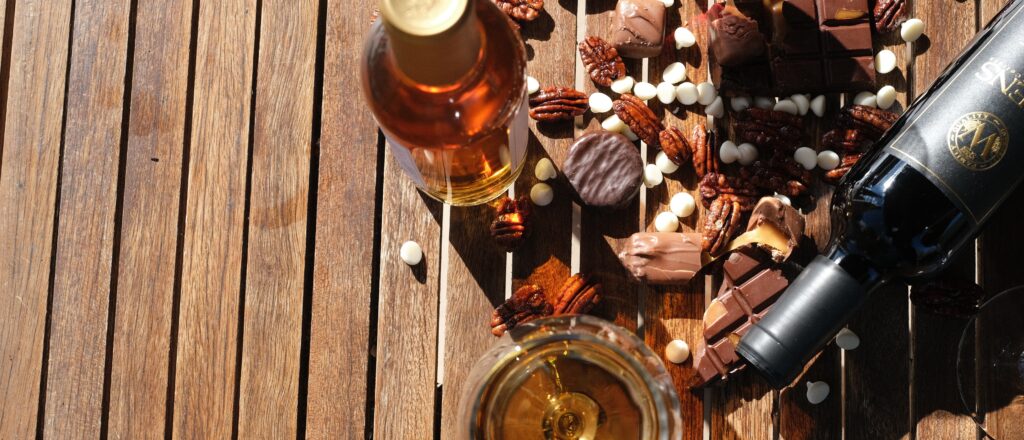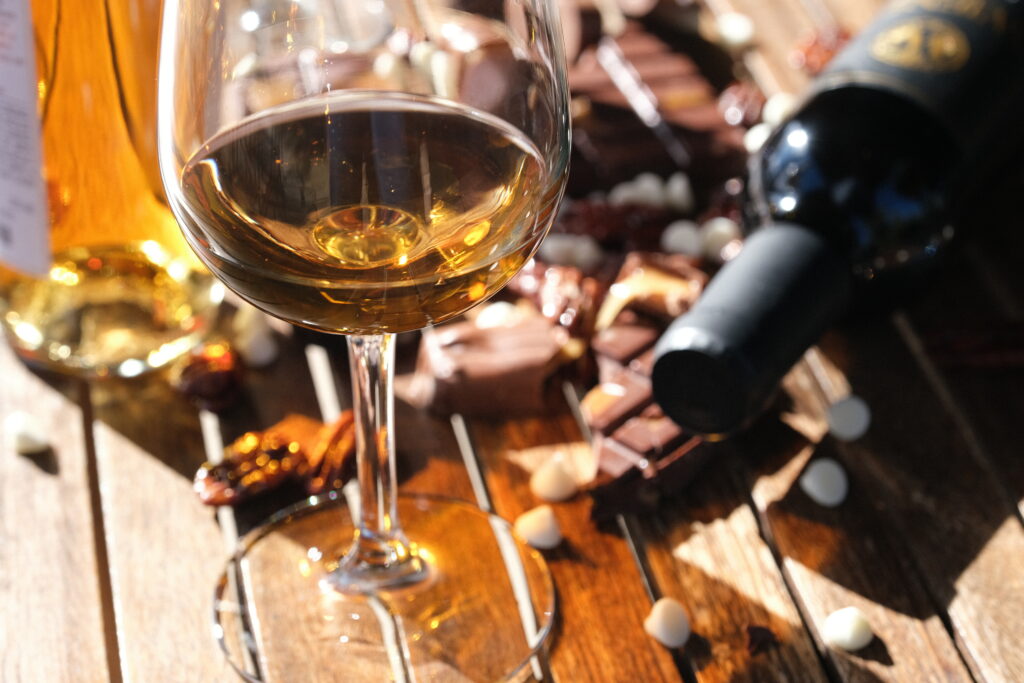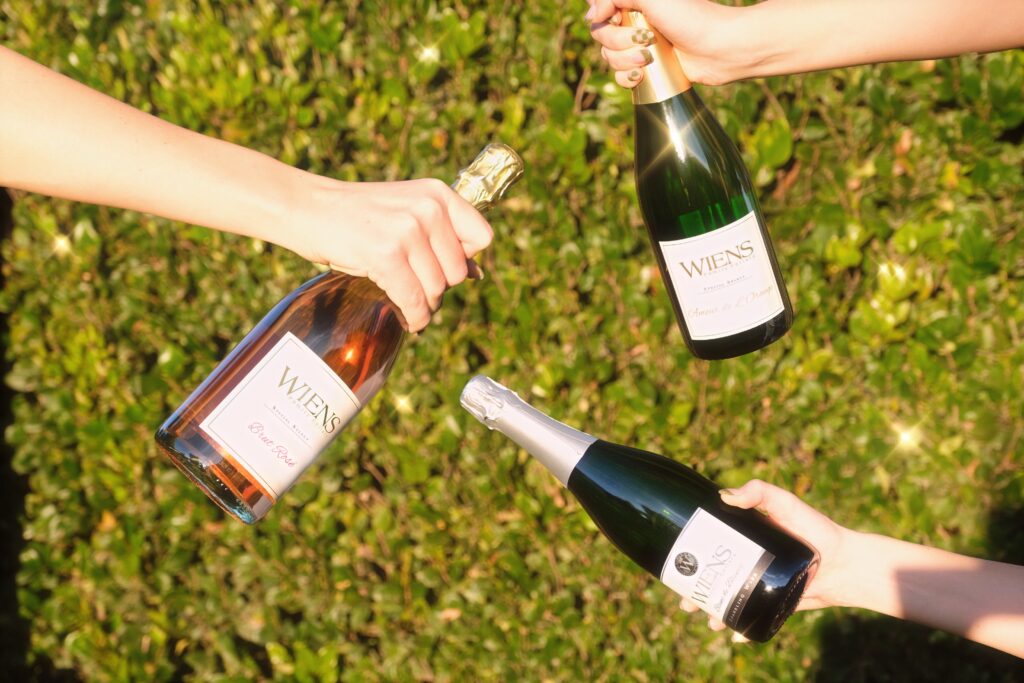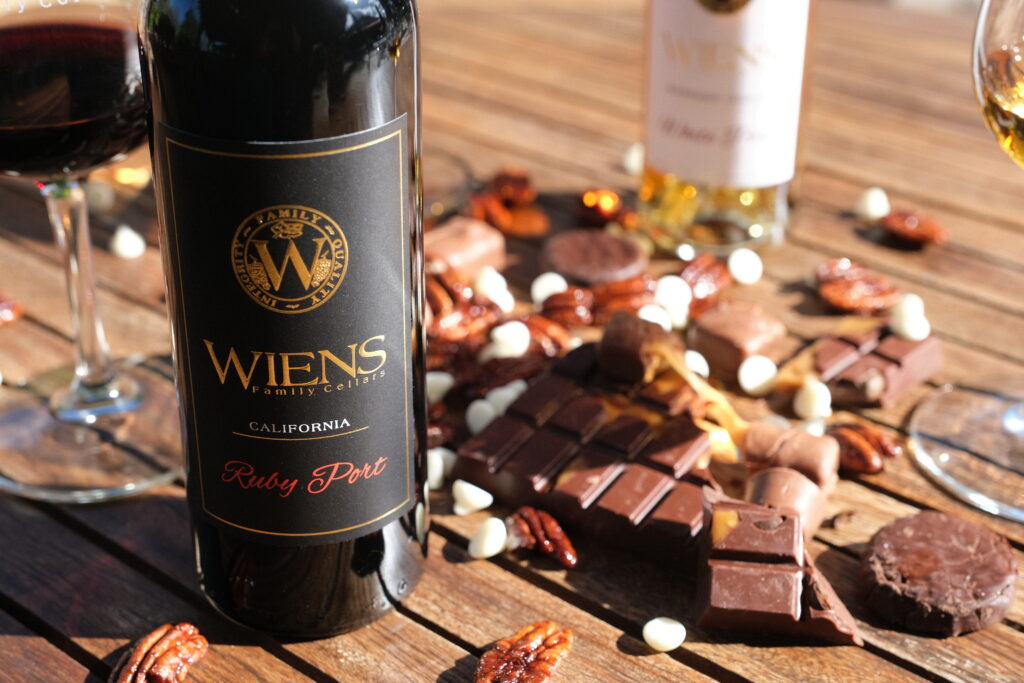
Dessert wines, the crowning glory of the winemaking world, are a testament to the artistry and dedication of vintners. These luscious elixirs are known for their exceptional sweetness and complexity, making them the perfect conclusion to a fine meal. Dessert wines stand apart from their counterparts in the wine world due to their unmistakable, concentrated sweetness, which is often balanced by refreshing acidity. What sets them apart is the fortitude and patience involved in their crafting. Dessert wines are not merely the result of grapes left on the vine until they’re exceedingly ripe; they undergo a series of intricate techniques, each designed to accentuate their inherent sweetness.
This article is your key to unlock the enchanted world of dessert wines. Together, we will explore the craftsmanship behind these wines, savor their diverse styles, understand their perfect pairings, learn the art of serving, and explore the globe to find the unique dessert wines that define their regions.
The Making of Dessert Wines
Dessert wines come to life through a variety of methods, each adding its distinctive touch to the wine’s final profile. These methods are not just about capturing the sweet essence of the grapes but also the unique terroir that influences the grapes’ sugar content.
- Noble Rot: This fascinating method is employed in the making of exceptional dessert wines like the illustrious Sauternes from Bordeaux. A specific fungus, Botrytis cinerea, is the star of the show here. It dehydrates the grapes and concentrates their sugars, leading to a wine that balances rich sweetness with vibrant acidity. The result is a symphony of honeyed apricot, citrus, and floral notes.
- Ice Wine: In regions where temperatures plummet, such as Canada and Germany, the grapes are left to freeze on the vine. Only when the mercury drops significantly are these frozen grapes harvested. This natural freezing process concentrates the sugars, and when they are gently pressed, the extracted juice is incredibly sweet. Ice wines are celebrated for their intense sweetness and refreshing acidity.
- Late Harvest: In late harvest winemaking, grapes are left on the vine well past their usual picking time. This extended hang time allows the grapes to naturally raisin, concentrating sugars while maintaining their acidity. Late harvest wines often boast a luscious, syrupy texture and flavors reminiscent of honey and dried fruits.
- Fortification: The method of fortification involves the addition of grape spirits (brandy) to halt fermentation, preserving the grape’s natural sugars. This technique is famous in the production of Port wine. The result is a wine that retains a sweet, rich character with higher alcohol content, making it perfect for aging.
The role of sugar and fermentation in dessert wine production
The natural sugar content of grapes, expressed in degrees Brix (a measurement of sugar content), is a critical factor in crafting dessert wines. The higher the Brix level, the sweeter the grapes and the potential for sweet wine production. In the realm of dessert wines, sugar is not just a source of sweetness; it’s also a canvas on which winemakers paint.
The process of fermentation is where this artistry unfolds. In typical wine production, yeast consumes the sugars in the grapes, transforming them into alcohol and producing a dry wine. However, in the case of dessert wines, the aim is to preserve some of the natural grape sugars, resulting in a wine with notable sweetness.
The winemaker’s skill lies in determining when to stop fermentation to achieve the desired level of sweetness. This can be achieved by cooling the fermentation vessels, adding spirits to fortify the wine, or sterile filtering to remove the yeast before fermentation is complete. Each of these methods helps retain a specific balance of sugar, alcohol, and acidity, resulting in a dessert wine that is harmoniously sweet and captivating.
Understanding the methods and science behind dessert wine production gives us a profound appreciation for these extraordinary wines. Each bottle becomes a testament to nature’s gifts and human ingenuity, encapsulating the essence of sweet perfection.
In the subsequent sections, we’ll delve into the world of dessert wine, exploring various types, their ideal pairings, and the art of serving and storing them to savor the elegance of these wines fully.
Popular Types of Dessert Wines
Dessert wines come in a dazzling array of styles, each captivating with its unique flavor profile and history. These wines offer a sweet finale to a meal, showcasing the culmination of winemaking artistry.
- Port: The Timeless Elegance of Fortified Wine
- In the world of dessert wines, few can rival the timeless allure of Port. This fortified wine holds a special place in the hearts of wine enthusiasts, and it’s no different at Wiens Cellars. Port wine is celebrated for its richness and complexity, and our winemaker holds a deep appreciation for this exceptional elixir.
- Quoting our esteemed winemaker, “Port is a wine that’s aged to perfection, a symphony of bold, sweet flavors that can only be achieved through time and tradition. At Wiens Cellars, we craft Port wines that are the epitome of elegance, capturing the essence of the Douro Valley right here in Temecula.”
- Port wine originates from the Douro Valley in Portugal, where it’s fortified with grape spirits, preserving the natural sweetness and creating a wine of remarkable depth. Tasting a glass of our Port is like experiencing a time capsule of history and flavor—a sip of the past with the promise of the future.
- Sauternes: Liquid Gold from Bordeaux
- Across the ocean in Bordeaux, France, another masterpiece takes shape in the form of Sauternes. Sauternes is crafted through the noble rot method, where the Botrytis cinerea fungus lends its magic. This fungus concentrates the grapes’ sugars, leading to a wine of unparalleled sweetness.
- Sauternes often showcases a golden hue and a symphony of flavors, from luscious apricot and honey to vibrant citrus and floral notes. This complex wine is revered for its versatility and can be paired with an array of desserts, from crème brûlée to blue cheese.
- Ice Wine: Nature’s Sweet Embrace
- When winter blankets the vineyards in icy stillness, it’s time for Ice Wine to shine. Regions like Canada and Germany have perfected this winemaking technique, allowing the grapes to freeze naturally on the vine.
- Ice Wines offer a fascinating contrast of sweet and refreshing, with intense sweetness and a lively acidity. Their flavors often mimic honeyed peaches, tropical fruits, and a zesty citrus tang. Sipping Ice Wine is like capturing the essence of winter’s magic in a glass.
- Late Harvest Wine: Grapes of Luscious Abundance
- While winemakers often aim to harvest grapes at their peak ripeness, Late Harvest wines celebrate the abundance that comes after. These grapes are left on the vine to mature further, concentrating sugars and flavors.
- Late Harvest wines, characterized by their sweetness and syrupy texture, are often paired with a range of fruity desserts, adding a touch of opulence to the experience.
- Sherry: The Spanish Icon
- Spanish Sherry holds a distinguished place in the world of dessert wines. Crafted in the sun-soaked vineyards of Andalusia, Sherry is a fortified wine known for its wide range of styles, from dry to intensely sweet.
- Sherry wines offer an eclectic range of styles, from the light and crisp Fino to the rich and luscious Pedro Ximénez. They are a diverse ensemble of flavors, including nuts, dried fruits, and caramel. Pair Sherry with tapas, nuts, or even rich, chocolate desserts for a memorable experience.
In the following sections, we’ll explore the art of pairing dessert wines with food, ideal serving and storing conditions, and the enchanting world of dessert wines at Wiens Cellars.
Pairing Dessert Wines with Food
Dessert wines possess a unique charm that complements a wide range of culinary delights. The art of pairing dessert wines with food is an exciting exploration of contrasting and harmonious flavors, and at Wiens Cellars, we’re dedicated to making your dining experiences extraordinary.
Classic Pairings with Various Dessert Wines
Classic pairings are classic for a reason—they are timeless and unbeatable. Here are some classic dessert wine and food pairings that never fail to delight:
- Port Wine: The Ultimate Cheese Companion
- Port and cheese—a classic combination that has stood the test of time. The rich and complex flavors of Port wine, with notes of dried fruits and nuts, harmonize wonderfully with a variety of cheeses. Try it with a luscious Stilton, a creamy Brie, or a sharp cheddar. The contrast of sweet and savory creates a sensory explosion on the palate.
- Sauternes: Foie Gras’s Best Friend
- Sauternes, with its opulent sweetness and vibrant acidity, is a match made in heaven for foie gras. The creamy, buttery texture of the liver pâté finds its ideal counterpart in the apricot and honey notes of Sauternes. It’s an extravagant pairing that elevates both the food and the wine.
- Ice Wine: Tantalizing with Fruit-Based Desserts
- Ice Wine’s intense sweetness and zesty acidity make it a natural partner for fruit-based desserts. Consider pairing it with a fresh fruit tart, a citrusy sorbet, or a berry crumble. The wine’s vibrant notes of honey, peaches, and tropical fruits enhance the natural sweetness of the dessert.
- Late Harvest Wine: A Delectable Duo with Tarts
- Late Harvest wines, with their velvety texture and honeyed flavors, are a wonderful choice for pairing with tarts. Whether it’s a lemon tart, apple pie, or a decadent chocolate tart, the wine’s sweetness balances the dessert’s tanginess or richness, creating a memorable ensemble.
- Sherry: A Tapas and Nut Affair
- Sherry’s diverse range of styles opens the door to a wide array of pairings. It’s an ideal match for Spanish tapas, featuring dishes like olives, almonds, and cured meats. The nutty and savory notes in Sherry complement the salty and umami flavors of tapas brilliantly.
Unconventional and Adventurous Pairings
While classic pairings offer delightful certainty, the world of dessert wines also encourages creativity. Exploring unconventional and adventurous pairings can lead to unexpected and exciting flavor combinations. At Wiens Cellars, we celebrate the art of thinking outside the box and invite you to experiment with these innovative pairings:
- Port Wine with Barbecue
- Why not add a new dimension to your barbecue experience by savoring it with Port wine? The wine’s fruity and spicy notes, coupled with the richness of a well-cooked barbecue, create an enticing contrast. Whether it’s ribs, brisket, or grilled vegetables, the bold flavors of the barbecue enhance the wine’s complexity.
- Sauternes with Spicy Cuisine
- Sauternes’ sweetness provides an intriguing counterbalance to the heat of spicy cuisine. Consider pairing it with spicy Thai or Indian dishes. The wine’s apricot and honey notes offer a soothing respite from the spices, creating a unique harmony on the palate.
- Ice Wine with Blue Cheese
- The intense sweetness and acidity of Ice Wine make it an exciting companion for blue cheese. The cheese’s pungent and savory qualities find a perfect foil in the wine’s honeyed and fruity flavors. It’s an unconventional, yet surprisingly delectable, pairing that’s bound to excite the senses.
- Late Harvest Wine with Savory Dishes
- Surprise your taste buds by pairing Late Harvest wine with savory dishes. The wine’s honeyed sweetness can be an excellent complement to salty and umami-rich foods like prosciutto, foie gras, or a mushroom risotto. This unconventional pairing offers a delightful fusion of flavors.
- Sherry with Desserts
- While Sherry is typically considered a dessert wine, it can also be paired with a variety of desserts. Try it with a nutty baklava, a rich and dark chocolate cake, or even a crème brûlée. The wine’s diversity of styles ensures a creative adventure in pairing.
These unconventional pairings highlight the versatility of dessert wines and encourage you to explore the vast world of culinary possibilities. The key to successful pairings is experimentation and a willingness to savor the unexpected.
Serving and Storing Dessert Wines
Dessert wines, with their captivating flavors and nuances, deserve the utmost care when it comes to serving and storage. To fully appreciate their rich complexity, it’s crucial to adhere to the right serving temperatures and storage practices. David Steinhafel, our owner at Wiens Cellars, emphasizes the importance of these aspects:
Ideal Serving Temperatures: Enhancing the Tasting Experience
Many people ignore the the significance of serving dessert wines at their ideal temperatures, a detail that can significantly enhance your tasting experience. Each type of dessert wine has an optimal serving temperature that allows its unique character to shine.
- Port Wine: For classic Port wine, a slightly cool temperature of around 55°F (13°C) is recommended. This slightly cooler setting ensures that the wine’s sweetness remains in balance with its acidity and complex flavors.
- Sauternes: The glorious golden nectar of Sauternes is best enjoyed between 45°F to 50°F (7°C to 10°C). This range preserves the wine’s intricate aromatic profile, showcasing its honeyed and fruity notes.
- Ice Wine: Ice Wines delight the palate when served chilled, ideally at 45°F (7°C). This temperature reveals the wine’s luscious sweetness while maintaining its refreshing acidity.
- Late Harvest Wine: Late Harvest wines can be enjoyed slightly cooler than room temperature, around 50°F (10°C). This range allows their rich and honeyed characteristics to unfold gracefully.
- Sherry: Sherry’s serving temperature depends on its style. Fino and Manzanilla Sherries should be served cold, at around 45°F (7°C), to emphasize their refreshing qualities. Amontillado and Oloroso Sherries benefit from a slightly warmer 55°F (13°C) setting to highlight their complex aromas and nutty notes.
These serving temperatures might slightly vary based on personal preferences, but adhering to these ranges ensures a balanced tasting experience. As you indulge in the world of dessert wines, experimenting with temperatures can reveal different dimensions of flavor.
Tips on Storing and Aging Dessert Wines: Nurturing Liquid Treasure
The potential for dessert wines to age gracefully adds to their allure:
- Keep It Cool and Consistent: Storing dessert wines at a consistent temperature is vital. A temperature between 55°F to 57°F (13°C to 14°C) is often ideal. Avoid dramatic temperature fluctuations, as they can negatively impact the wine.
- Dark and Humid Sanctuary: Dessert wines thrive in dark and humid environments. Protect your bottles from direct light, which can harm the wine’s flavor. A humidity level of 70-80% keeps the corks moist, preventing unwanted oxidation.
- Lay It Down Gently: If your dessert wines have natural corks, lay the bottles on their sides. This keeps the cork in contact with the wine, preventing it from drying out and letting air in.
- Choose the Right Location: Select a storage location that’s free from strong odors. Dessert wines are incredibly aromatic, and they can easily absorb unwanted scents if stored near pungent substances.
Patience is a virtue when it comes to aging dessert wines. While most can be enjoyed young, some, like Port and certain Late Harvest wines, can evolve beautifully over years or even decades. Regularly revisiting your stored dessert wines allows you to experience their development and savor them at different stages of maturity.
Storing and serving dessert wines in accordance with these tips ensures that you’re experiencing them at their best. These wines are designed to bring joy, and with the right care, that joy can last for many years to come.
Dessert Wines Around the World
Dessert wines are not bound by borders; they’re a testament to the diversity of winemaking techniques and terroirs around the world. Let’s embark on a journey to discover the unique dessert wines originating from various regions and countries:
Exploring Different Regions Known for Their Dessert Wines
- France – Sauternes: Nestled in the Bordeaux region of France, Sauternes is renowned for its luscious and opulent dessert wines. Here, in the misty mornings and sunny afternoons of the Graves district, Semillon, Sauvignon Blanc, and Muscadelle grapes develop noble rot, which concentrates their sugars and flavors. The result is a world of golden richness, with Château d’Yquem leading the way.
- Germany – Eiswein: In Germany, Eiswein (Ice Wine) is a star. Here, winemakers brave frigid temperatures to harvest grapes that have frozen on the vine, concentrating their sugars and flavors. The result is a harmonious balance of sweetness and acidity, with the Rheingau and Pfalz regions being celebrated for their Eisweins.
- Canada – Icewine: Canada, particularly the Niagara Peninsula in Ontario and the Okanagan Valley in British Columbia, is famed for its Icewine. The country’s cold winters create ideal conditions for these sweet treasures. Canadian Icewine showcases the purity of the fruit, offering delightful notes of orchard fruits and honey.
Unique Dessert Wines from Various Countries
- Spain – Pedro Ximénez Sherry: Pedro Ximénez Sherry from Spain’s Andalusia region is an epitome of sweet intensity. Produced from sun-dried Pedro Ximénez grapes, it’s a dark, rich elixir with flavors of fig, raisin, and molasses. This velvety sweet Sherry is often used as a dessert on its own.
- Greece – Vinsanto: From the beautiful island of Santorini comes Vinsanto, a unique dessert wine crafted from sun-dried Assyrtiko and Aidani grapes. Aged for years in oak barrels, it offers notes of dried fruits, honey, and spices.
- South Africa – Vin de Constance: Vin de Constance, hailing from South Africa, is a dessert wine of historical significance. Made from Muscat grapes, it has a floral bouquet and flavors of ripe apricots, orange peel, and honey.
- Hungary – Tokaji Aszú: The Tokaj region in Hungary is famous for its sweet Tokaji Aszú wines. These wines, often referred to as “The Wine of Kings, the King of Wines,” are made from botrytis-affected Furmint and Hárslevelű grapes. They are known for their vibrant acidity, complex flavors, and a rich history dating back centuries.
Exploring dessert wines from different regions and countries is like taking a voyage around the globe through your wine glass. Each region’s terroir and winemaking techniques imbue their dessert wines with distinct characteristics, and the world of dessert wines is as rich and diverse as the global wine map itself.
Dessert Wines at Wiens Cellars
Wiens Cellars proudly offers a selection of dessert wines that cater to various preferences and occasions:
- Ruby Port: Our Ruby Port is an embodiment of bold flavors and timeless traditions. Crafted from a blend of traditional Portuguese grape varieties, it boasts notes of ripe red fruit, dark chocolate, and spice. It’s a perfect choice for savoring by itself or pairing with chocolate-based desserts.
- White Port: Our White Port stands as a symbol of elegance and finesse. It radiates with flavors of apricot, honey, and almonds, offering a well-balanced sweetness that makes it a delightful companion to creamy desserts and fresh fruit platters.
- Sparkling Trio – Blanc de Blancs, Brut Rosé, and Amour de L’Orange: Our sparkling wines are not only delightful aperitifs but also versatile companions for dessert. Our Blanc de Blancs showcases crisp apple and citrus notes, which pair wonderfully with lighter, fruit-based desserts. The Brut Rosé offers the vivacity of red berries, making it a refreshing choice for berry-themed desserts. Finally, our Amour de L’Orange, with its citrusy zing, can complement citrus-infused cakes and creamy desserts with a zestful twist.
Pairing and Serving Suggestions for Wiens Cellars Dessert Wines
Pairing dessert wines can be a delightful adventure, and at Wiens Cellars, we’re eager to guide you through this journey:
- Ruby Port Pairing: Our Ruby Port can be served slightly chilled, enhancing its bold flavors. It’s an excellent match for dark chocolate tortes, chocolate fondue, or sharp cheeses like blue cheese or aged cheddar.
- White Port Pairing: Enjoy our White Port chilled as an aperitif or alongside appetizers such as nuts, dried fruits, and olives. It also harmonizes with lighter desserts like almond cakes, peach cobbler, or crème brûlée.
- Sparkling Trio Pairing: Our sparkling trio provides an array of pairing possibilities. The Blanc de Blancs marries beautifully with lemon tarts, seafood appetizers, or simply on its own as a refreshing starter. The Brut Rosé is a lovely companion to strawberry shortcake, mixed berry desserts, and charcuterie. As for Amour de l’Orange, its bright acidity complements orange sorbet, lemon meringue pie, or a zesty fruit salad.
We invite you to explore the symphony of sweetness at Wiens Cellars, where our dessert wines await to elevate your dining experiences and leave a lingering, sweet note of perfection.
In the enchanting world of dessert wines, every sip unfolds a story of craftsmanship and indulgence. From the meticulous methods of production that coax out the natural sugars, to the tantalizing flavors that dance on your palate, dessert wines are a delightful universe unto themselves. We’ve delved into the essence of dessert wines, unraveling their production secrets, exploring global varieties, and discovering the magic that happens when they meet a plate of delectable delights. Whether you savor a rich Ruby Port, an elegant White Port, or embark on a sparkling journey with our Blanc de Blancs, Brut Rosé, and Amour de L’Orange, the experience is an ode to the sweeter moments in life. At Wiens Cellars, we invite you to raise your glass to the symphony of sweetness, as each dessert wine uncorks a symphony of flavors and uncovers the joy of true craftsmanship, creating unforgettable memories one glass at a time. Here’s to the sweet endings, where every sip is a sweet story.



